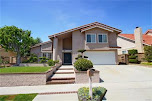SPRING HOUSING ALREADY OVERHEATING – THINK 60 OFFERS ON ONE HOUSE
The spring housing market started early this year, not because of higher-than-average temperatures but because of hotter-than-average demand and overheating home prices.
This year may be the starkest example of a post-recession reality that is redefining housing as we know it.
"This spring housing market is shaping up to be another doozy for homebuyers," said Ralph McLaughlin, chief economist for home-listing website Trulia. "Housing affordability is the key to helping break yet another year of gridlocked inventory, but all signs are showing that homes this spring will be much less affordable than last year."
Affordability is being hit on several fronts: The foreclosure crisis is over, but it left behind an entirely new landscape for potential buyers. Entry-level homes are scarce because investors bought tens of thousands of them during the crisis and turned them into rentals. The number of single-family rentals jumped to more than 15 million, up from about 11 million in 2009, according to the U.S. Census.
Homebuilders continue to operate well below normal levels because of higher costs and a lack of labor, and thousands of construction workers left the business during the recession, never to return. Builders don't focus on entry-level homes because the margins are simply too tight, and prices for new construction are also rising at a fast clip.
What's more, credit is still tight, and the youngest cohort of buyers, the millennials, are delaying marriage and parenthood, the two biggest drivers of home ownership. The shortage of homes for sale has now pushed prices to a 30-year high, according to S&P CoreLogic Case-Shiller. Rising mortgage rates only add to the pressure.
"Home prices continue to advance, with the national average rising faster than at any time in the last two-and-a-half years," said David M. Blitzer, managing director and chairman of the index committee at S&P Dow Jones Indices. "With all 20 cities [in the S&P/Case-Shiller Index] seeing prices rise over the last year, questions about whether this is a normal housing market or if prices could be heading for a fall are natural."
At a Sunday open house in Los Angeles this weekend, nearly a dozen house hunters showed up before the scheduled start. The three-bedroom, two-bathroom home was reasonably priced, in a desirable neighborhood and move-in ready.
Emily Leach, 35, knows that story all too well. She has been looking for a few months, hoping that by getting in before spring she might have a better chance at an affordable home. So far, that has not been the case.
"We actually had a house that we saw that we really liked in South-Central Los Angeles, and we tried to make a move on that and we got outbid. South-Central!" she laughed.
Michelle and Derrick Jacob have been trolling the market for six months. They have a strict budget with little leeway, making it difficult for them to compete.
"The ones we want seem to be purchased in a snap, over asking price most of the time, well over asking price," Derrick Jacob said.
Housing demand climbed considerably this year, even compared with last year, as the leading edge of the largest generation finally moves into homebuying and a stronger job market supports them. A monthly demand index from Redfin jumped to the highest level since January 2013, when the index began. Compared to January 2016, homebuyer demand was up 23 percent, led by a 26 percent annual increase in homebuyers requesting tours and an 18 percent increase in buyers making offers.
"Soaring stock markets, still-low mortgage rates, and a steady economy bolstered homebuyers at the start of 2017," said Nela Richardson, Redfin chief economist. "Homebuyers were not just window shopping. They were serious about making offers and getting to the closing table. However, this uptick in homebuyer enthusiasm won't guarantee strong sales in the coming months. With pending home sales down across the country in January despite strong demand, the lack of supply is a formidable foe for buyers this year."
Higher home prices in some areas are supported by improving local economies and employment, but in other markets, too much demand pitted against too little supply is resulting in overheated housing. Dallas, Las Vegas, Phoenix, and Portland, Oregon, are overpriced by 10 to 14 percent, according to a recent report from Fitch Ratings, which considers markets overheated when they exceed the areas' supporting economic fundamentals. Los Angeles, Miami and Tampa, Florida, are close to 10 percent overvalued.
Analysts at Fitch don't predict when any of these bubbles will burst, but they do point to certain warning signs.
"For Dallas, the current unemployment rate in the Fort Worth [Texas] region is 3 percent. You'd have to go back 30 years to go that low. We think it's not sustainable. The business cycle will turn. Eventually, when it does, home prices will come down," said Samuel So, director of research at Fitch.
Potential buyers today are facing tough new realities. Some houses are clearly overpriced, and renting is still a better financial option in some markets. Competition is fierce for the best homes, and buyers have to be ready to pull out all the tricks.
"You have to make an introductory letter, little story about yourself and you just hope that the home that you're buying is not being sold by a flipper because they are much more neutral," Leach advised. "If you have a home that's being sold by the previous owners, you might be able to get that emotional human connection."






































0 comments:
Post a Comment